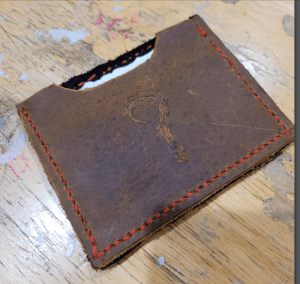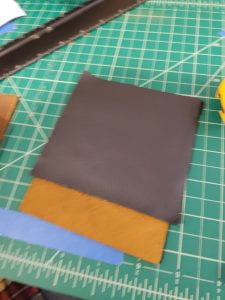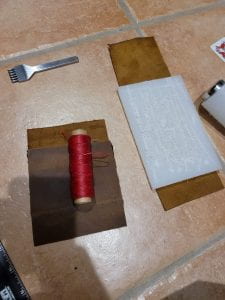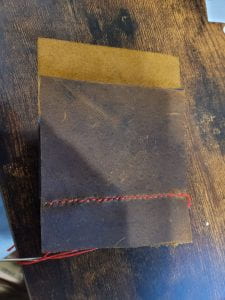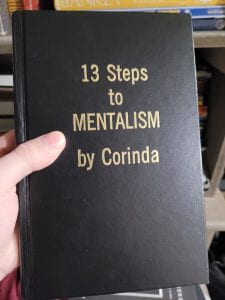I went for an unconventional approach for my assignment: I Call it the “Spirit Wallet”
The word I chose was originally “Curiosity,” but with Wennie’s guidance, I changed it to the more specific “Magic.”
In essence, the object itself is a small leather wallet to be used in a magic effect. I won’t go into detail about the method itself, but I used traditional leatherworking techniques, such as Saddle Stitching, and using multiple width irons to punch the holes.
While there is a single question mark branded into the leather, I consider the “text” portion to be the story and “script” behind the performance part.
A magic trick is worth nothing without someone to perform it and someone to watch it, after all…
The video below explains the history behind the object, so I suggest watching that to get a sense of what this is all about:
Here’s a close up of the final object as well as some images of the process:
I’ve been performing magic, mentalism, and sleight of hand semi-professionally for over ten years, and over that time I have amassed a somewhat large collection of strange props, artifacts, and books about the history of magic from over the past 100 years. This is what ended up being my personal archive. A small selection of items from the collection can be seen here.
The book I drew from the most was The 13 Steps to Mentalism by Tony Corinda, originally published in 1961.
While planning the project, I created this board of images that I felt related to the concept:
https://www.pinterest.com/judahmantell/curiosity-board/
One of my favorite images is below:
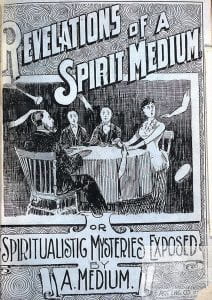
Overall I am very satisfied with the final product. I made good use of my (somewhat crappy) leatherworking skills in a fun and interesting way. Leatherwork takes a lot of time, even for a small project, so that took up the bulk of the time, then I had to make the wallet functional, implementing the “gimmick” element to make it function as a prop.
As mentioned above, the actual, physical object doesn’t have much text on it, but the piece as a whole relies heavily on the spoken word to have any meaning–much like any performance art.






